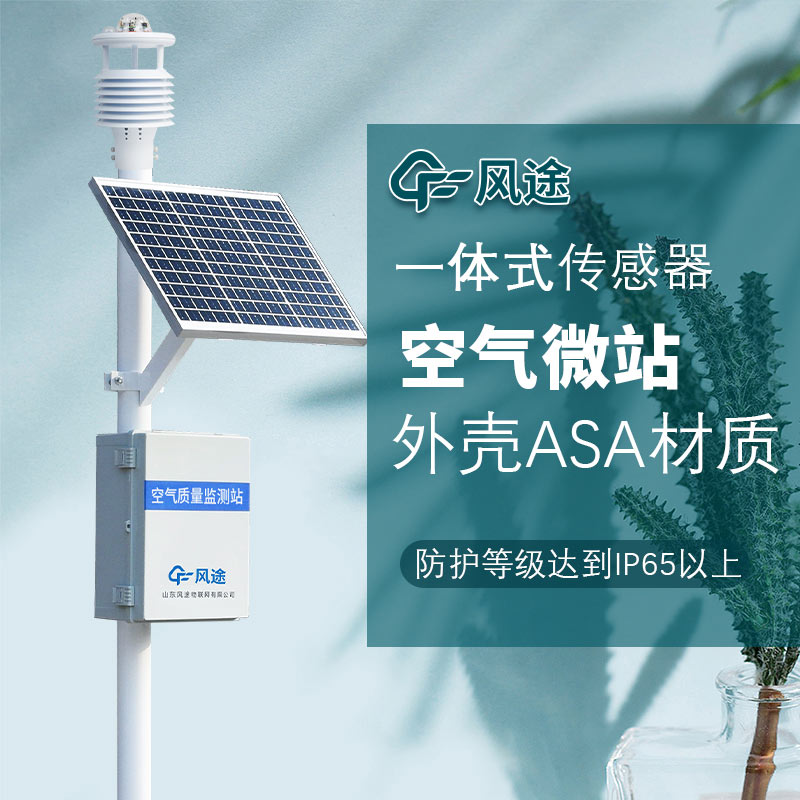Shandong Fengtu IOT Technology Co., Ltd
Sales Manager:Ms. Emily Wang
Cel,Whatsapp,Wechat:+86 15898932201
Email:info@fengtutec.com
Add:No. 155 Optoelectronic Industry Accelerator, Gaoxin District, Weifang, Shandong, China

Sales Manager:Ms. Emily Wang
Cel,Whatsapp,Wechat:+86 15898932201
Email:info@fengtutec.com
Add:No. 155 Optoelectronic Industry Accelerator, Gaoxin District, Weifang, Shandong, China
time:2024-11-27 09:48:06 source:Weather Station viewed:461 time
The Air quality monitoring station is playing an increasingly prominent role in the field of environmental monitoring. It can monitor a variety of air pollutants in real-time, such as sulfur dioxide, nitrogen dioxide, carbon monoxide, ozone, and particulate matter. Its operation relies on different sensors. The particulate matter is monitored using the principle of laser scattering, while gaseous pollutants are detected by electrochemical sensors, thus accurately determining the concentration of pollutants.
The monitoring station is small and easy to install and can be widely distributed in every corner of the city, such as streets and communities. It has a low cost and fast data update, which can timely reflect the changes in air quality. It has important applications in urban environments, around industrial sources, and at transportation hubs, providing crucial data for environmental management.
In the grid monitoring system, the two have a close relationship. Gridding is a management mode that divides an area into numerous small grids. The Air quality monitoring station, as the core, is deployed at the grid nodes to comprehensively cover the area. It collects and integrates the data of each grid. With this data, the polluted area and time period can be accurately located. For example, if the pollutant concentration in a certain grid is abnormal, the cause can be specifically investigated, which may be due to a nearby factory or traffic issues.
Gridding achieves refined management with the help of small monitoring stations. Compared with the previous model of a few large monitoring stations, it can clearly present the spatial distribution of air quality, quickly identify local pollution hotspots, enable targeted environmental law enforcement, and timely control pollution sources to improve air quality. The long-term accumulated data also provides strong support for air quality prediction and assessment, ensuring the sustainable development of the city and the health of residents. It is an important means and an effective model for modern environmental monitoring and management.

An Online Dust Monitoring System is a device used to monitor airborne dust particles, operating on the principle of pump-based sampling. Pump-based sampling refers to using a built-in micro vacuum pump or air pump as a power source to actively draw ambient air at a constant flow rate through a sampl...
FT-IV2 I-V Curve Tracer is a high-precision testing equipment based on current-voltage (IV) characteristic analysis, used for performance evaluation of electronic components such as photovoltaic modules and semiconductor devices.Working PrincipleThe working principle of FT-IV2 is based on the photoe...
Landslide monitoring equipment, as an important tool for ensuring geological safety, can monitor the characteristics of landslide masses and related environmental factors, providing crucial data for analyzing landslide risks.Displacement monitoring equipment: The GNSS monitoring system utilizes the...
Fengtu's Soil Moisture Meter is a capacitive sensor that measures the dielectric constant of the soil medium by detecting changes in the capacitance value on the sensor, thereby calculating the soil's capacitance rate.The Soil Moisture Meter is made of durable materials and can be installed...